News

NASA's Airborne Sensor Facility MASTER wildfire monitoring
On September 9th, 2020, Bay Area residents woke up to darkness. Acrid smoke blocked out the morning sun. The sky, dense with ash, turned a deep orange hue.
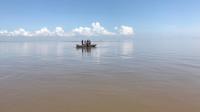
After COVID-19 Delay, Delta-X Field Campaign Begins in Louisiana
Teams are headed out by land, water, and air to collect data that will be used to forecast land gain and loss in the Mississippi River Delta as a result of sea level rise.
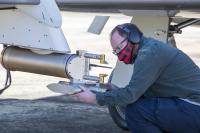
ACTIVATE Begins Year Two of Marine Cloud Study
A NASA airborne study has returned to the field for a second year of science flights to advance the accuracy of short- and long-term climate models.
The Aerosol Cloud meTeorology Interactions oVer the western ATlantic Experiment (ACTIVATE) began the third of six planned flight campaigns — two campaigns each year beginning in 2020 and ending in 2022 — in late January at NASA's Langley Research Center in Hampton, Virginia.

NASA’s DC-8 Returns to Flight
NASA’s DC-8 aircraft returned to the skies after more than a year of maintenance, which included an overhaul to all four engines. NASA operates the highly-modified Douglas DC-8 as a flying science laboratory in support of the agency’s Airborne Science program. On Monday, Jan. 18, the aircraft departed for San Antonio, Texas, where it will remain for planned periodic depot maintenance over several months.

ASP Research Network as tracked by the Mission Tools Suite
This figure depicts nearly eight years of science flights across the globe by the NASA Airborne Science Program (ASP) aircraft serving the needs of the Earth Science community. Flight tracking is achieved using the Mission Tools Suite (MTS).
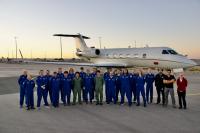
Capturing an Asteroid Sample Return from Down Under
A team of NASA researchers traveled to Australia to work with partners supporting a mission to return an asteroid sample to Earth. The Scientifically Calibrated In-Flight Imagery (SCIFLI) Hayabusa 2 Airborne Reentry Observation Campaign (SHARC) team successfully imaged the reentry of the Japan Aerospace Exploration Agency (JAXA) mission Hayabusa 2.
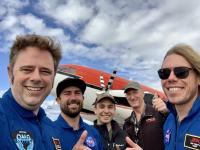
Pandemic Delays, But Doesn’t Slow, Ice Melt Research in Greenland
Despite racing against impending harsh weather conditions, a red and white World War II aircraft flew slowly and steadily over the icy waters surrounding Greenland in August and September. Three weeks delayed by pandemic restrictions, scientists from NASA’s Jet Propulsion Laboratory inside this retrofitted DC-3 plane started dropping hundreds of probes as part of an annual expedition known as the Oceans Melting Greenland(OMG) Project.

ACTIVATE Makes a Careful Return to Flight
NASA's Aerosol Cloud Meteorology Interactions Over the Western Atlantic Experiment (ACTIVATE) eased into its second set of 2020 science flights out of NASA's Langley Research Center in Hampton, Virginia. Barring any threats to the health or safety of the researchers or crew, flights will continue through the end of September
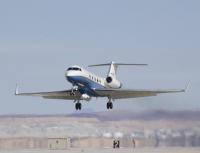
NASA Takes Flight to Study California's Wildfire Burn Areas
While the agency's satellites image the wildfires from space, scientists are flying over burn areas, using smoke-penetrating technology to better understand the damage.
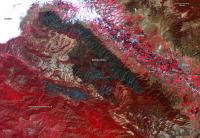
From Space and in the Air, NASA Tracks California's Wildfires
Earth-observing instruments on satellites and aircraft are mapping the current fires, providing data products to agencies on the ground that are responding to the emergency.
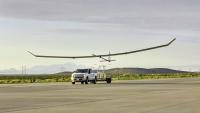
NASA Small Business Partnership Prepares Drone for 30-Day Science Flights
With the help of NASA’s Ames Research Center in California’s Silicon Valley, Swift Engineering of San Clemente, California, completed a two-hour flight test of their Swift High-Altitude Long-Endurance (HALE) UAS. The applications of the technology – for science, agriculture, and disaster response – could have a real impact on our everyday lives.

NASA Airborne Science Interns Gathering Data at Home
Every summer since 2009, the NASA Student Airborne Research Program (SARP) has brought about 30 undergraduate STEM students from across the United States to California for an internship experience with NASA Earth Science research that includes flights on a research aircraft. This year with COVID-19 travel and social distancing restrictions in place, SARP might be grounded but the internship continues with new at-home data collection as well as the analysis of previously collected aircraft, ground and satellite data.

NASA Prepares for New Science Flights Above Coastal Louisiana
Delta-X, a new NASA airborne investigation, is preparing to embark on its first field campaign in the Mississippi River Delta in coastal Louisiana. Beginning in April, the Delta-X science team, led by Principal Investigator Marc Simard of NASA's Jet Propulsion Laboratory in Pasadena, California, will be collecting data by air and by boat to better understand why some parts of the delta are disappearing due to sea-level rise while other parts are not.
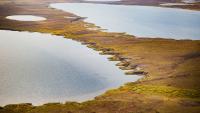
NASA Flights Detect Millions of Arctic Methane Hotspots
The Arctic is one of the fastest warming places on the planet. As temperatures rise, the perpetually frozen layer of soil, called permafrost, begins to thaw, releasing methane and other greenhouse gases into the atmosphere. These methane emissions can accelerate future warming—but to understand to what extent, we need to know how much methane may be emitted, when and what environmental factors may influence its release.

Probing the Hazy Mysteries of Marine Clouds
A new NASA airborne science mission will take researchers on coordinated flights above, through and below the clouds over the western North Atlantic Ocean. The Aerosol Cloud Meteorology Interactions Over the Western Atlantic Experiment (ACTIVATE) is scheduled to begin the first of six flight campaigns this week at NASA's Langley Research Center in Hampton, Virginia.

NASA Snow-Chasers Set to Fly Into East Coast Winter Storms
This month NASA is sending a team of scientists, a host of ground instruments, and two research aircraft to study the inner workings of snowstorms. The Investigation of Microphysics Precipitation for Atlantic Coast-Threatening Snowstorms, or IMPACTS, has its first deployment in a multi-year field campaign from Jan. 17 through March 1. It will be the first comprehensive study of East Coast snowstorms in 30 years.
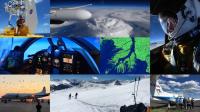
Media Invited to Preview of New NASA Field Campaigns
NASA is inviting members of the media to a behind-the-scenes tour and briefing on five new research campaigns that will take to the field in 2020 to explore questions critical to understanding our home planet. The event is scheduled for Tuesday, Jan. 7, from 7 a.m. to 12:30 p.m. PST at NASA’s Armstrong Flight Research Center, Building 703, in Palmdale, California.
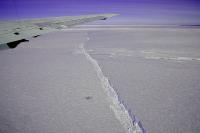
NASA’s Operation IceBridge Completes Eleven Years of Polar Surveys
For eleven years from 2009 through 2019, the planes of NASA’s Operation IceBridge flew above the Arctic, Antarctic and Alaska, gathering data on the height, depth, thickness, flow and change of sea ice, glaciers and ice sheets.
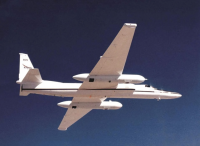
NASA to Study East Coast Snowstorms from VA. Skies
NASA has announced it will use Wallops Island Flight Facility, just south of Chincoteague Island, as a jumping-off point to study Atlantic snowstorms starting in January.
It’s the first major field campaign to study East Coast snowstorms in 30 years.
The Investigation of Microphysics and Precipitation for Atlantic Coast-Threatening Snowstorms (IMPACTS) study will send a high-altitude aircraft (flying from Savannah, Georgia) and a cloud-sampling aircraft (flying from Wallops Island) to look closer at how snow is distributed in the clouds.
NASA explains that the “cloud processes” responsible for snowstorms are difficult to measure, and forecast models can’t reproduce them very well. That makes for poor snowfall predictions.
“People see pictures of these big swaths of clouds and think they’re snowing everywhere, but they’re not,” said IMPACTS principal investigator Lynn McMurdie at the University of Washington in Seattle. “Inside the clouds are these long narrow regions of more intense snow bands. We’re trying to understand why they form and how they evolve with the developing storm.”
Since the last time East Coast snowstorms were studied from the air, instruments have become much more advanced. NASA says now is “an ideal time to conduct a well-equipped study to identify key processes and improve remote sensing and forecasting of snowfall.”
NASA’s ER-2 and P-3 aircraft will fly for three six-week deployments.
-Meg Walburn Viviano
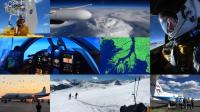
NASA Embarks on Five U.S. Expeditions Targeting Air, Land and Sea
NASA is sending five airborne campaigns across the United States in 2020 to investigate fundamental processes that ultimately impact human lives and the environment, from snowstorms along the East Coast to ocean eddies off the coast of San Francisco.
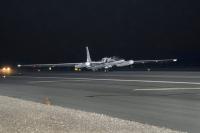
New Moon-Seeking Sensor Aims to Improve Earth Observations
A new instrument with its eye on the Moon is taking off aboard a high-altitude NASA plane to measure the Moon’s brightness and eventually help Earth observing sensors make more accurate measurements.
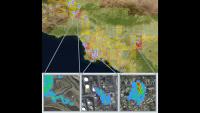
A Third of California Methane Traced to a Few Super-Emitters
NASA scientists are helping California create a detailed, statewide inventory of methane point sources - highly concentrated methane releases from single sources - using a specialized airborne sensor. The new data, published this week in the journal Nature, can be used to target actions to reduce emissions of this potent greenhouse gas.
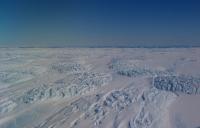
IceBridge Takes Flight from Down Under
IceBridge has been gathering data on Arctic and Antarctic ice sheets, glaciers and sea ice for 10 years. It was designed to ‘bridge the gap’ in between the Ice, Cloud and land Elevation Satellite (ICESat), which stopped collecting data in 2009, and ICESat-2, which launched in September 2018. Over the past decade, IceBridge has been based out of airports in Alaska, Greenland, Chile, Argentina and Antarctica – but for this final polar campaign, it has a new base at Hobart in Tasmania, Australia.

Philippine Airborne Campaign Targets Weather, Climate Science
Led by NASA, the U.S. Naval Research Laboratory (NRL) and the Manila Observatory in conjunction with the Philippine Atmospheric, Geophysical and Astronomical Services Administration and the Philippine Department of Science and Technology, CAMP2Ex comprises an interdisciplinary, international team of field researchers, modelers and remote sensing developers.
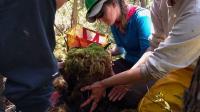
NASA Studies How Arctic Wildfires Change the World
Wildfires in the Arctic often burn far away from populated areas, but their impacts are felt around the globe. From field and laboratory work to airborne campaigns and satellites, NASA is studying why boreal forests and tundra fires have become more frequent and powerful and what that means for climate forecasting, ecosystems and human health.
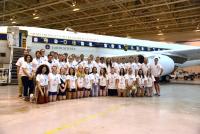
Student Airborne Research Program Takes Flight over California
Twenty-eight undergraduate students are participating in an eight-week NASA airborne science field experience this summer that will immerse them in the agency's Earth Science research.
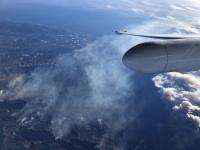
Through Smoke and Fire, NASA Searches for Answers
This summer, NASA is embarking on several field campaigns across the world to investigate longstanding questions surrounding fire and smoke. Aircraft will fly through smoke and clouds to improve air quality, weather and climate forecasting, and investigate fire-burned forests to capture ecosystem changes that have global impact.

Study Predicts More Long-Term Sea Level Rise from Greenland Ice
Greenland’s melting ice sheet could generate more sea level rise than previously thought if greenhouse gas emissions continue to increase and warm the atmosphere at their current rate, according to a new modeling study. The study, which used data from NASA’s Operation IceBridge airborne campaign, was published in Science Advances today.

Looking For Freshwater In All the Snowy Places
Snowflakes that cover mountains or linger under tree canopies are a vital freshwater resource for over a billion people around the world. To help determine how much freshwater is stored in snow, a team of NASA-funded researchers is creating a computer-based tool that simulates the best way to detect snow and measure its water content from space.
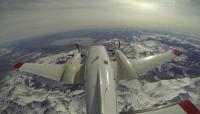
NASA Explores Our Changing Freshwater World
Researchers funded by NASA have used satellite and airborne data to better inform existing tools for flooding, drought forecasts and famine relief efforts, and for planning and monitoring regional water supplies. These efforts are tackling some of the most pressing needs of people around the world.
